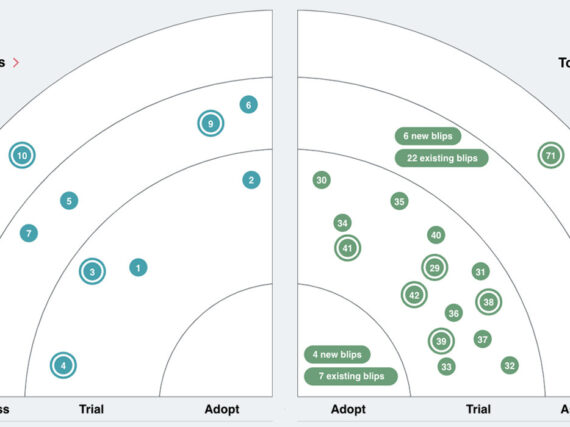Like many public sector websites, the Virginia Department of Education (VA DOE) portal was developed more than a decade ago, growing over time like a community garden. However, while vibrant, it was lacking in attention, pruning, and cultivation. We spoke with our government insider, Kevin Erickson, about his work to modernize the VA DOE site.
According to Erickson, although well intended, the department’s policy of equitably providing each division with their own area on the site, complete with their own look and feel, created issues with out-of-control content and a lack of a unified, user-focused navigation and theme.
Without a clear content strategy to manage its growing archive, the site accumulated excessive information and file bloat over the years. This made it difficult to navigate, and a challenge for users to find relevant information. Additionally, like many older public sector sites, it was not initially designed to be mobile responsive or fully accessible.
The VA DOE’s situation is similar to that of many government sites facing modernization issues. Erickson explains the hurdles to progress, and the ways in which they are working to overcome them.
Content without strategy
When the DOE site was built, websites were still a new and exciting enterprise for government. The culture within the department, like many other public sector entities, encouraged directors to look productive by putting as much content on the site as possible.
“Everybody wanted to add their content to the website,” Erickson explained. “But challenges arose around content strategy, site navigation, and the user-experience of the site.”
The trend was to continuously add as much content as possible to ensure that each divisions – information had a home, and staff felt included. Many of the documents on the site ranged in age from recent, to 10-plus years old. When the people responsible for the content left the department, the information was neglected and became outdated.
Although some content may have been amended at some point, it may not have had a complete overhaul. Nor was extensive user testing done to test site navigation or determine prioritization of content. Without proper archiving it became hard to figure out what content was still relevant, what content belonged together, and how best to cull the overgrown garden.
Struggling to organize content
In 2010, the VA DOE switched to a topic-based approach to improve the uniformity of the site. The decision to change the site from ‘office-division’ based organization to ‘topic’ based, as well as changing the layout, was a step in the right direction.
However, without making mobile access and Section 508 accessible practices a priority, or developing an ongoing content strategy, and doing the appropriate user testing, DOE fell short of becoming a truly modern site.
For example, the main navigation on the left of the site screen is not organized alphabetically and the secondary navigation is on the right of the screen, which people don’t always notice. Additionally, the site was designed for a 1024 pixel-wide screen size which was the most popular at the time but is not mobile responsive.
A lot of offices within the VA DOE began working around the website, getting their individual information out to the public via weekly superintendent memos, which have now become the most current information. This means the website is no longer the true source of accurate records and up-to-date information.
To solve this problem, Erickson’s goal for the site is to have a clear content strategy, as well as to be fully mobile responsive and accessible.
Establishing a content strategy
Updating a site often requires a large cultural change. Furthermore, the job of keeping the site up-to-date is complex, involved, and very time consuming. Erickson observes that people may be afraid to update or remove outdated content for fear of repercussion, but in truth, without a clear policy in place no one really knows what to do.
Erickson adheres to the belief that there should be clear policies in place for the content of government sites. This helps relevant content to be promoted, while older and stale content can be appropriately archived, updated, or discarded as needed in keeping with state regulations.
Erickson hopes to put in place a more formal policy regarding site content and to develop a true content strategy. “It’s about working with the agency to make them work with all the tools they have available,” he says.
There has been a big effort by Erickson and his team to decide what content to keep, how to reduce this file bloat, and locate content duplication. Erickson gives the subject matter experts (SMEs) data on their content so they can update it, (e.g. here’s a document which hasn’t been updated in X years, or there are multiple copies of the same information on different pages). By educating the internal users, creating awareness and by giving them the ‘how’s’ and the ‘why’s’ of these changes, Erickson is able to manage a large scale departmental change in an effective, modularized way, tackling one area of the site at a time.
Designing for content
Erickson is in the process of moving the existing site from its current state to a new and modern look and feel. This will better meet the needs of citizens and match the way in which they engage with public sector services via mobile devices. It requires a full review of the site content and development of more intuitive navigation.
He and his team are touching each page, starting with a template, and pulling it into a sandbox environment to make necessary updates. By using an algorithm to edit each page step-by-step, he searches the site for HTML containers and replaces and updates items piece-by-piece.
Careful consideration is also being given to how the site navigation can make it easier for all users to find information. This includes moving the primary navigation to the top of the page, and the secondary navigation to the left of the page, which is more in keeping with modern practices.
These changes will help with mobile responsiveness as well. Ideally, the new site will be fully responsive, fast and lightweight, with a warm inviting feel in keeping with the branding of the DOE.
The new site will also be fully accessible for all users and have basic modern features such as a mega footer at the bottom. The change from Section 508 compliant to WCAG 2.0 AA has created a need for design changes and best practices to be implemented. See our other article with Erickson, Wrangling Public Sector Sites into Compliance.
“We want it to look and feel fresh,” he says, “and for all users to know this site was built and structured with everyone in mind.”
Agile foundation
The effort needed for an agency-wide project requires multiple factors and coordinated efforts working seamlessly. Erickson’s team of two has demonstrated productive gains by organizing the site redevelopment work in an agile framework with manageable sprints.
How well the project moves forward is greatly aided with a top-down approach where a responsible staff is clear on their roles and the priority of their tasks so that what is needed to be done does not hold up others’ tasks. It is expected that there will be delays due to the schedules involved and unforeseen tasks or scope creep in any project. This is why successful agency-wide projects depend on a solid and well thought out project management framework.
In Erickson’s opinion, agile is the best way to manage a project of this magnitude. As a certified ScrumMaster who has worked in a SAFe environment (Scaled Agile Framework), he has seen how teams working together depend on each other and know what the others are doing at any given time.
“The teams need to know their cadence, how well their tasks are being tackled, and if there are any dependencies involved in their tasks and others’ tasks,” he says.
Erickson believes planning and agile project management can be orchestrated to create a foundation for any project. With a proper foundation, wasted time is minimized and a realistic timeline can be established.
Slow but steady progress
Erickson notes that one can’t make these changes overnight and it is vital to obtain buy-in from the top. He views his role more as a helpful consultant than a restrictive web editor. This means that site modernization doesn’t fall on one individual, but rather becomes a shared responsibility.
“These are user experience improvements that have been practiced for years,” he says, “but it takes dedication and commitment from the web team and department heads to make them happen.”
Erickson recommends the following steps to create support for a website modernization project and achieve meaningful results:
- Take stock of the current site, what is good, and what needs to change
- Create a clear vision for change consistent with the values of the department
- Start with a mobile-first strategy, ensuring that the site is mobile responsive and fully accessible to all users
- Get support from all divisions, including creating a top-down policy for content strategy and style guide
- Designate one person from each division to attend the web team meetings so they can champion the changes, train others in their divisions, and help with a top-down policy approach
- Set realistic deadlines for change and celebrate small successes
In summary
We appreciate hearing Erickson’s perspective on how agencies such as the VA DOE are able to manage their websites with limited resources. Progress is slow but steady and best practices are implemented as resources and time allow. It can be a long process.
If it sounds like too much, GovWebworks helps many agencies that don’t have in-house resources to accomplish website modernization. We can implement a new and modern website quickly and efficiently, or add new services to an existing website. This gives agencies the chance to work with an experienced vendor to implement best practices for content strategy, mobile responsiveness, accessibility, and many other enhancements.
Learn more
- Check out the GovWebworks list of potential website enhancements
- 16 Key Features to Optimize Public Sector Sites for Mobile
- Contact us with questions about how GovWebworks can help with website modernization
Author bio
Ravi Jackson has a background in law, finance, and policy, with 10 years of experience in the Maine state government. A witty Brit with a gift for discourse, he welcomes further discussion on this topic. He can be reached at ravi.jackson@govwebworks.com and @RaviJacksonGWW on Twitter.







